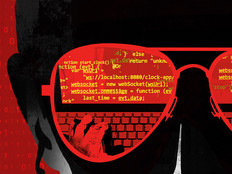How Riverside, Calif., Innovates with Citizen-Centric IT
Lea Deesing joined Riverside last April to hone technology strategy, improve processes and enhance citizen collaboration. She came to the post from higher education, and before that, she spent 16 years in local government.
Deesing recently spoke with StateTech Managing Editor Amy Schurr about her technology goals for the city and how tech is being used to spur economic development.
STATETECH: What type of IT environment did you encounter upon joining the city?
DEESING: I encountered an accomplished, award-winning IT department when I came here six months ago. The partnership with Xerox as our outsourcing provider offers flexibility and scalability that I hadn't experienced in former environments.
STATETECH: How has the IT environment changed during your tenure?
DEESING: Our momentum continues because of Riverside's innovative culture, its high expectation for excellence, and most important, the talented IT employees who have the skills and ambition to make innovative ideas become a reality.
Over the past six months we've made, and will continue to make, even more progress in the areas of employee innovation and development.
STATETECH: How do you spark innovation?
DEESING: To really think differently, you need to do something differently. That slight change may inspire a whole new way of thinking. The equation is: problem plus new way of doing equals new way of thinking and a spark of innovation.
For example, we established a weekly Tech Showcase program to foster creativity and risk-taking. These 30-minute meetings include two 15-minute presentations on something compelling: a new idea, project update, presentation or vendor demo. We've had standing room–only attendance, and the meetinghas resulted in idea sharing, a better understanding of each other's jobs, staff discovering their public speaking skills and a more innovative environment.
STATETECH: Which of the city's IT projects have had the greatest impact?
DEESING: We're upgrading or replacing almost all major systems, such as computer-aided dispatch, finance, utility billing and many more. These behind-the-scenes upgrades are critical to providing quality services to citizens. Some of our applications are hosted in the cloud, but we've tried to keep most of our infrastructure local.
STATETECH: How has Riverside moved services online?
DEESING: Our "Virtual City Hall" website has significantly aided our citizens. Our goal is to virtualize all city services that they can experience in person at City Hall, saving them time and gasoline.
We just deployed an electronic plan review system whereby builders and developers can submit their building plans online. We're also working on additional timesaving applications where simple permits, such as water heater installations, can be obtained and inspected online. We have numerous other online services available on our website.
Heavy Medal
The city of Riverside, Calif., won several major awards in 2013, including the following IT-related honors:
- Municipal Information Systems Association of California Excellence Award
- Award of Excellence in the Office of the Midmarket CIO
- Best of the Web and Digital Government Achievement Award, Second Place for City Portal
- Digital Cities Survey Winner, Third Place
STATETECH: Riverside's citizen-facing apps are well known. What type of mobile apps does the city develop for its workers?
DEESING: Several mobile apps help staff become more effective and efficient. For example, our "GO165" mobile field app allows staff to manage city assets using GIS. They can view all types of asset history data, such as light pole maintenance records by locating the pole geographically on the map. The IT department also developed the Graffiti Abatement Tool that allows police and public works to input and track graffiti instances throughout the city, which is designed to assist with prosecution of the perpetrators and track costs for cleanup.
STATETECH: How does the city use social media to foster citizen collaboration?
DEESING: Riverside has more than 43 social media groups, channels and feeds with 32,500 followers. Our social media sites include Facebook, Twitter, YouTube, LinkedIn, Instagram and Pinterest. We take a very collaborative approach in engaging citizens through social media channels. Staff conducts training for departments on the use of social media so they're equipped with the administrative knowledge and protocols for each social media type.
STATETECH: In what ways are you using IT to spur economic development?
DEESING: I report directly to the economic development branch of the city, and IT is treated as a core operational asset toward economic and job growth. Being the "City of Arts and Innovation" is not just a title — we actively seek ways in which we can innovate to compete for economic growth to attract new businesses with high-paying jobs, bring homebuyers to the area, retain college graduates and more.
Jim Clifton's book, The Coming Jobs War, says it all — we need local tribal leaders to come together to find ways to create jobs. Technologists are no exception. We must all collaborate and contribute to propel our organizations into prosperity. We're all critical to economic development, revenue generation and the future.
STATETECH: What results has the SmartRiverside program achieved?
DEESING: Our digital inclusion center has helped almost 7,000 families access computer training and free computers. This program also provides work opportunities for at-risk youth to learn new skills and run our electronic waste recycling program. It has deployed 1,600 wireless access points to provide residents with free Wi-Fi, although the city is considering reducing the scope of its Wi-Fi deployment. SmartRiverside also has a tenant improvement grant component that helps high-tech companies that choose to locate in Riverside.
STATETECH: What's your vision for Riverside as a smart city?
DEESING: We must focus on narrowing the digital, economic and opportunity divide within our region. One key element in realizing economic prosperity is to give our residents and businesses opportunities that come with high-speed Internet access.
With continued focus on economic development, collaboration, innovation and leadership, Riverside is well positioned to continue its journey toward economic growth and prosperity in our region. We have all of the necessary ingredients in place to get there.









